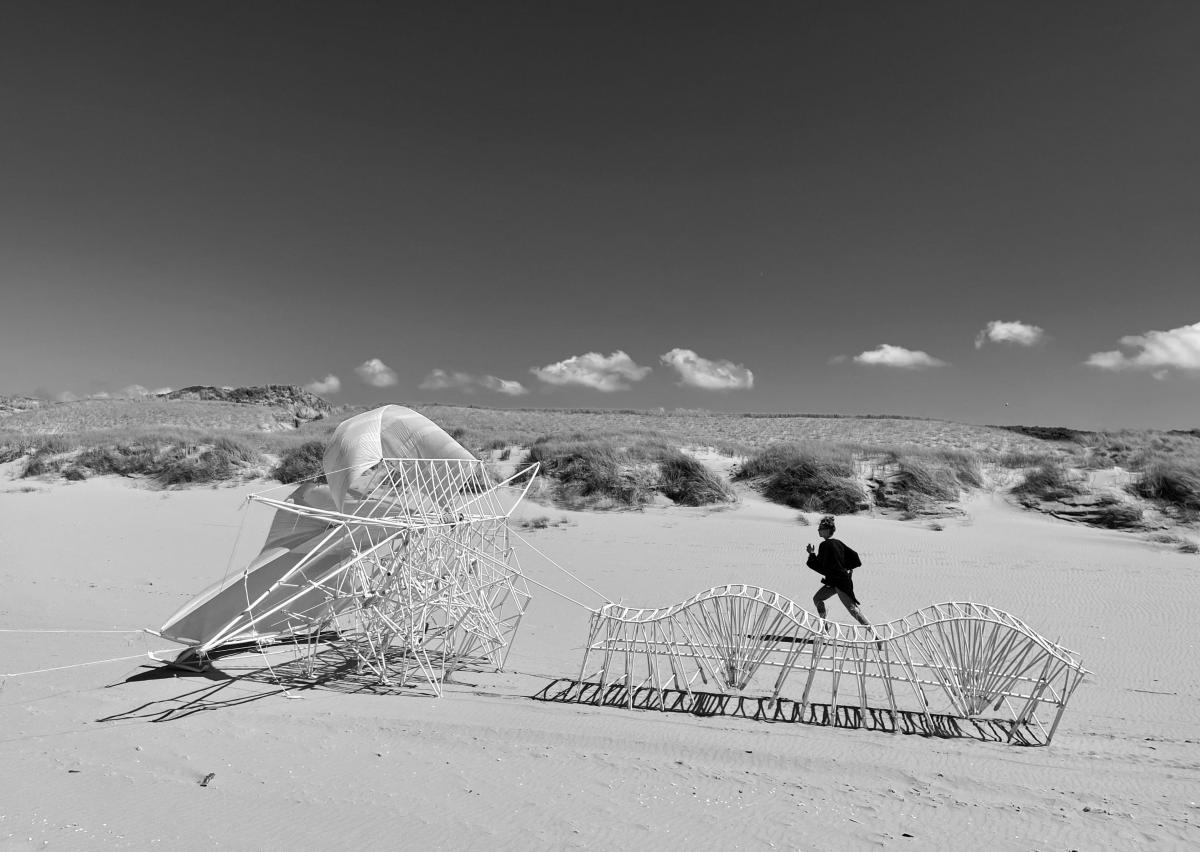Strandbeests. The New generation from Theo Jansen
Small beasts to handle, big creatures to admire
An extremely rare presentation in France of the work of Theo Jansen, this exhibition allows you to dive into the work of this brilliant sculptor and inventor. His Strandbeests, articulated structures, move with ease in an autonomous way, thanks to the only force of the wind. Built with simple tubes and recycled materials, they impress with their anatomy and spectacular size. After having created this retrospective with the Kunstmuseum in The Hague, Jansen reveals here his techniques and his astonishing career.
Theo Jansen : Force of nature
You have to imagine Theo Jansen, 74, in his natural environment in the Netherlands: an immense beach of white sand near The Hague, a sky of such intensity that artists of all eras have tried to reproduce it , and clouds so different that the Dutch language gives names to each one. There, the artist, heir to kinetic art and automaton designers, transforms the beach into a research laboratory where his monumental creatures unfold. An engineer by training, Theo Jansen is inspired by Darwinian selection: after digital modeling, only the most efficient and fast creatures are selected to be built and finally set in motion by the breath of the wind on the shores of the North Sea.
A genealogy
Strandbeests are much more than works of art. Theo Jansen strives to actually create life with the ultimate goal of letting his creations live unaided, in large herds, on the beach. Realizing that this won't be a reality in the short term, he made his dream clear in an interview with National Geographic: "Give me another few million years and my Strandbeests will live completely on their own." Over the past decades, Jansen has continued to develop the beach beasts – he now distinguishes twelve generations – and has thus taken many steps towards this independence. Each new species was given a Latin name like Animaris Vulgaris, Animaris Rhinoceros or Mater Extensa. In the most recent period, Volantum (2020/2021), a flying variant was developed with Ader.
Read the visitor's guide here.
Free entrance. City hall garden and Museum of Fine Arts. Bordeaux.
